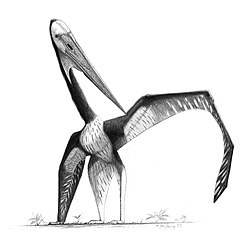Paleobiota of the Tangshang Formation
Color key
| Notes Uncertain or tentative taxa are in small text; |
| Genus | Species | Location | Stratigraphic Position | Material | Notes | Images |
|---|---|---|---|---|---|---|
| "Chilantaisaurus" | "C". zheziangensis | Zhejiang | "Second member of the Fangyan Formation" | "Partial left tibia with pes." [2] | A therizinosauroid. Originally identified as a distinct species of Chilantaisaurus . [3] [2] | |
| Yandangornis | Y. longicaudus | Aolicun | "Nearly complete skeleton." [4] | An avialan. |  | |
| Zhejiangopterus | Z. linhaiensis | Aolicun | "Skulls and skeletons of multiple specimens." [5] | An azhdarchid. |  | |